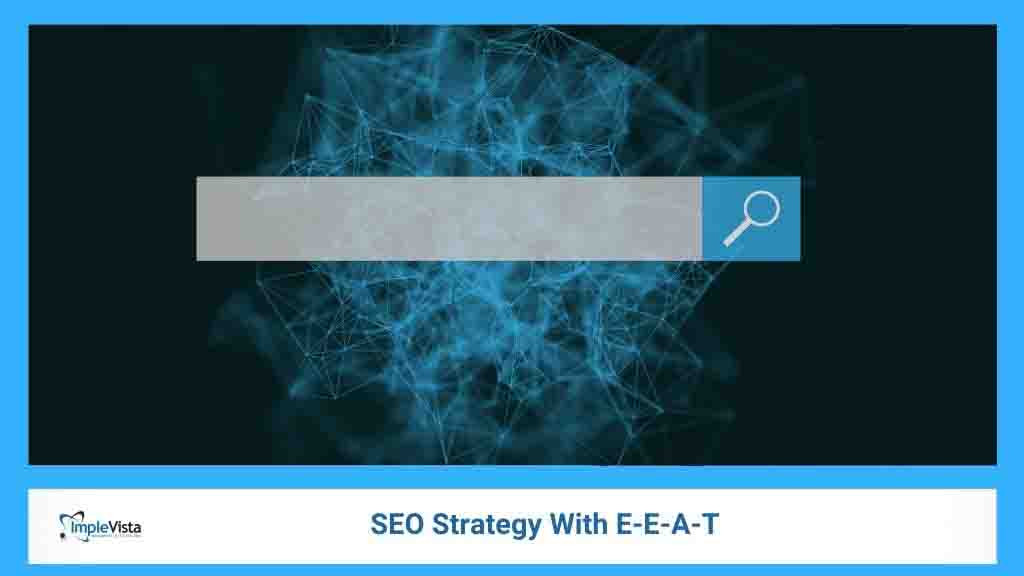In the ever-evolving world of digital marketing, search engines are constantly refining how they evaluate and rank content. One of the most impactful updates in recent years is Google’s emphasis on EEAT — an acronym for Experience, Expertise, Authoritativeness, and Trustworthiness. This framework plays a pivotal role in shaping an effective SEO strategy, ensuring that the content not only ranks well but also delivers value and builds credibility with audiences.
For businesses aiming to dominate search results in 2025 and beyond, aligning SEO efforts with Google’s E-E-A-T standards is not just a best practice — it’s a necessity. Whether you’re a growing startup in Bangladesh or an established enterprise, understanding how to implement E-E-A-T can significantly boost your online visibility and trustworthiness.
What Is E-E-A-T?
E-E-A-T stands for Experience, Expertise, Authoritativeness, and Trustworthiness. It’s an evolution of Google’s original E-A-T framework, which has become a key part of how Google evaluates the quality and credibility of web content.
Initially introduced through Google’s Search Quality Rater Guidelines, E-A-T helped human evaluators assess whether content met the standards of accuracy, reliability, and value. These human evaluations then contribute to improving Google’s algorithmic understanding of quality content.
The Evolution: From E-A-T to E-E-A-T
The addition of the extra “E” for Experience reflects a growing emphasis on first-hand knowledge. Google understands that content created by someone with real-world experience often carries more weight, especially for certain sensitive topics.
This update is particularly crucial for “Your Money or Your Life” (YMYL) content—topics that can significantly affect a person’s health, finances, safety, or overall well-being. For example, a financial guide written by a certified advisor or a product review from someone who has actually used the product will generally be seen as more trustworthy.
By moving to E-E-A-T, Google is signaling that it values not only credentials and authority, but also personal involvement and practical experience with the subject matter.
Is E-E-A-T a Ranking Factor?
It’s important to understand that E-E-A-T is not a direct ranking factor in Google’s algorithm—meaning, there isn’t a measurable “E-E-A-T score.” However, it plays a critical role in how Google’s algorithms are shaped and refined over time.
Human quality raters use E-E-A-T principles to evaluate the usefulness and credibility of search results. The insights they provide help inform future updates to Google’s algorithms. So, while E-E-A-T isn’t a ranking signal in itself, aligning your content with its principles can significantly influence your site’s long-term SEO success.
Why E-E-A-T Matters
Google’s goal is to provide users with the most reliable, helpful, and relevant information for any query. By prioritizing E-E-A-T in your content strategy, you help build trust with both search engines and real people.
For businesses and content creators, this means:
- Delivering content that is not just informative, but also backed by real-world experience
- Showcasing the credentials or background of your authors
- Building authority in your niche through consistent, high-value content
- Ensuring your website and content are perceived as trustworthy and transparent
While E-E-A-T is particularly essential for YMYL topics, its importance goes far beyond those. Today’s internet users appreciate content rooted in first-hand knowledge across a wide range of topics—whether it’s a technical tutorial, a travel guide, or a product review.
For example, if someone writes a review of the latest iPhone, it’s more credible if the reviewer has actually used the phone. Similarly, a blog post about the best restaurants in San Francisco carries more weight if the author has personally dined there.
E-E-A-T reflects Google’s ongoing effort to ensure content is accurate, authentic, and useful. As a content creator or business, optimizing for E-E-A-T means crafting content that shows your experience, demonstrates your expertise, earns authority, and builds trust.
It’s not just about pleasing algorithms—it’s about creating content that truly helps people.
Why E-E-A-T Is the Cornerstone of Modern SEO
At its core, E-E-A-T represents the qualities Google looks for in high-quality content. These signals help determine whether your content is worthy of being served to users on Page 1 of search results. Here’s a quick breakdown:
- Experience: Does the content reflect first-hand knowledge or real-life usage?
- Expertise: Is it written by someone with subject-matter knowledge?
- Authoritativeness: Is the source recognized in its field or industry?
- Trustworthiness: Is the site secure, reliable, and transparent?
For example, at Implevista Digital, we focus heavily on developing content strategies that include author bios, customer case studies, and technical accuracy — all of which help reinforce E-E-A-T signals across our client websites.
Developing an E-E-A-T Aligned SEO Strategy
Creating an SEO strategy that aligns with E-E-A-T involves more than just keyword stuffing or technical tweaks. It’s a holistic approach that blends content quality, technical excellence, and branding. Here’s how to approach it step-by-step.
1. Build Content Based on Real Experience
Experience is now the first “E” in the E-E-A-T model, and for good reason. Google prefers content that demonstrates first-hand usage, real-life results, or personal insight. For example, writing a review on a product or tool you’ve actually used — and supporting it with screenshots or metrics — will carry more weight than generic commentary.
You can include real experience in your blog posts, product pages, and even your service descriptions. For instance, on Implevista Digital, our case study on “SEO Basics for Bangladeshi Entrepreneurs” showcases how small businesses improved their rankings through hands-on strategies we implemented with them.
2. Showcase Author Expertise
Search engines are smarter than ever at analyzing content depth and author credentials. To align with E-E-A-T, it’s essential to highlight the expertise of your writers. Add bios at the bottom of your blog posts, link to their professional profiles, and mention qualifications or experiences that validate their authority on the topic.
At Implevista Blog, all our authors are credited with their respective roles and backgrounds, ensuring that both users and search engines recognize the value behind each post.
3. Strengthen Your Site’s Authoritativeness
Becoming an authoritative source in your niche requires consistent, value-driven content and external recognition. Google evaluates backlinks from high-quality websites, industry mentions, and brand strength as signs of authority.
To improve this:
- Publish long-form guides and whitepapers.
- Get quoted in relevant industry publications.
- Use internal linking to establish topic clusters.
Explore how Implevista helps businesses with content clustering in our article on SEO for International Websites.
4. Improve Trust Signals on Every Page
Trust is a make-or-break factor, especially for YMYL (Your Money, Your Life) sites, such as those in finance, health, or e-commerce. Your site must look and feel trustworthy at every touchpoint.
Ensure you:
- Implement HTTPS across your site.
- Display trust badges or security seals.
- Clearly mention your return policy, contact information, and disclaimers.
- Ensure user data is protected and never misused.
We emphasize this at Implevista Digital, where we highlight the link between Page Experience and SEO rankings.
5. Optimize for Google’s Technical Expectations
A good SEO strategy doesn’t stop at content. Google also evaluates Core Web Vitals, mobile-friendliness, page speed, and structured data. All of these contribute to your site’s perceived trust and authority.
Here are a few technical aspects to align with E-E-A-T:
- Add schema markup for articles, FAQs, reviews, and authors.
- Improve site speed using tools like Google PageSpeed Insights.
- Ensure mobile optimization with responsive design.
- Regularly update your sitemap and resolve crawl errors.
Check out our guide on why Schema Markup is necessary for SEO.
6. Create Content That Earns Featured Snippets
Content that aligns with E-E-A-T is more likely to earn Google’s Featured Snippets — those concise summaries that appear at the top of search results. To qualify, answer user queries clearly, use bullet points, and add structured data.
Our blog post, SEO Steps to Secure Google’s Snippets, is a great example of how to format and structure content that Google rewards.
7. Continuously Monitor, Analyze, and Improve
An SEO strategy aligned with E-E-A-T isn’t set-it-and-forget-it. It’s a living process. You need to monitor rankings, assess content performance, and optimize based on both data and Google’s evolving algorithms.
At Implevista, we use advanced analytics and reporting dashboards to track:
- Engagement metrics like time on page and bounce rate
- Keyword rankings across content clusters
- Technical performance based on Core Web Vitals
Want to improve your SEO over time? Read our insights on how to measure SEO performance.
EEAT as the Future of SEO
E-E-A-T isn’t a buzzword — it’s a strategic shift in how Google rewards content. Brands that invest in demonstrating real experience, validating their expertise, building authority, and ensuring trust will win both search rankings and audience loyalty.
For businesses in Bangladesh and beyond, this is the time to align your SEO strategy with E-E-A-T and future-proof your digital presence.
Frequently Asked Questions (FAQ)
What does EEAT stand for in SEO?
Experience, Expertise, Authoritativeness, and Trustworthiness — key criteria used by Google to evaluate page quality.
How does Google use E-E-A-T in rankings?
Google assesses these signals to determine content credibility and value, especially for YMYL pages.
Can small websites benefit from EEAT??
Absolutely. Even small blogs can showcase experience, provide trustworthy info, and build authority through thoughtful content.
How often should I update my SEO content for EEAT??
Review high-performing and outdated content every 6 months to ensure it aligns with EEAT?.
What are examples of trust signals?
SSL certificates, transparent privacy policies, real contact information, customer reviews, and return policies.
Does schema markup help with EEAT?
Yes, it helps search engines understand your content structure and enhances your authority signals.
What role does author bio play in EEAT??
It validates expertise and builds reader confidence, especially in technical or medical content.
Are backlinks still important under EEAT??
Yes, especially from high-authority domains. They reinforce your content’s trust and relevance.
How can Implevista help with EEAT??
We offer content audits, technical SEO, structured data, and long-form strategies designed to enhance your EEAT? signals.
Is EEAT? only relevant for blogs?
No. It’s essential across all web content — landing pages, e-commerce sites, and service pages.
Ready to Take the Next Step?
Partner with Implevista Digital for a complete EEAT SEO audit.
Explore our SEO Services to improve your rankings and authority.
Subscribe to our blog for more expert insights and actionable tips.
Read more:



